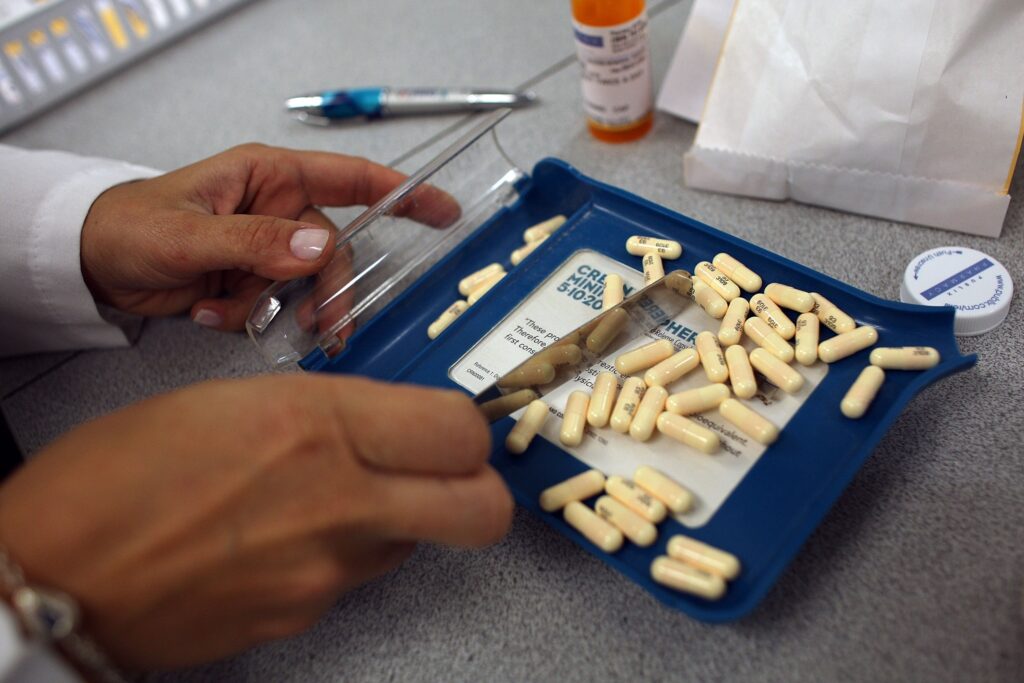A Publix Supermarket pharmacist counts out pills to fill a prescription in this file photo. Maryland’s Prescription Drug Affordability Board has targeted six drugs on which it may set a payment cap, to help lower costs for state health plans. Photo by Joe Raedle/Getty Images.
I read with great interest the Oct. 18 commentary by A. Mark Fendrick for three reasons.
First, I am a professor at Johns Hopkins University researching drug pricing. Second, I am one of the five board members of the Maryland Prescription Drug Affordability Board (PDAB). Maryland Attorney General Anthony Brown appointed me this year for a second five-year term. Third, Fendrick is a respected researcher at the University of Michigan who studies value-based purchasing.
Fendrick makes the very important point that you need to consider more than the price of the prescription drug. I agree.
But if he had read all the materials the Maryland PDAB had written on the subject, he would see that the board has published reports on 1) how Pharmacy Benefit Managers (PBMs) operate; 2) the very complex supply chain that affects access to drugs, and; 3) there are options that the PDAB considers in addition to setting an upper payment limit on the amount that the state can pay for prescription drugs.
Also, had he read the board’s site, he would not have made the erroneous claim that Maryland taxpayers are paying for the PDAB. The board is funded by fees imposed on the participants in the supply chain, not the Maryland taxpayer.
Lawmakers OK upper payment limits for prescription drugs on state health plans
What Fendrick does not discuss in his commentary is how high drug prices affect patients, the public and the government that pays for the drugs.
The Maryland PDAB has received letters from patients, the industry and other interested parties. We receive a lot of very helpful suggestions and have revised our approach based on this input. What struck me about Fendrick’s commentary was how similar it was to comments we received from the pharmaceutical industry.
The board selected the first six drugs based on multiple criteria, but one of the most important was the cost of the drug. There are six drugs on the initial list. These are all very expensive drugs that you see being advertised in newspapers, on TV and in social media every day. The data shows they have high out-of-pocket costs for each individual patient and for all patients.
The data I reviewed as a member of the Maryland PDAB shows that the Medicaid program is paying significant amounts for each of these six drugs and the state is paying a large amount for each of these drugs to provide health insurance for state and county employees.
Paying high prices for these drugs significantly limits access to these drugs and requires the state of Maryland to make difficult policy choices. Numerous studies have shown that 40% of the public has not filled a prescription because of the high costs of their prescription drugs. When the state provides prescription drug coverage to Medicaid recipients and to state and county employees, the state or county has fewer resources to provide more money for schools, police, environmental protection or other services.
The work Fendrick focuses on is value-based purchasing and insurance design. I cannot think of something having a higher value to a patient than having access to a prescription drug. But if the patient cannot afford the drug, it has no value.
Many drugs cost over $100,000 and if the patient is responsible for 20% of the cost, which is typical in many commercial insurance plans, the cost to the patient is $20,000. How many Marylanders can afford $20,000? As a result, they do without and there is no value.

